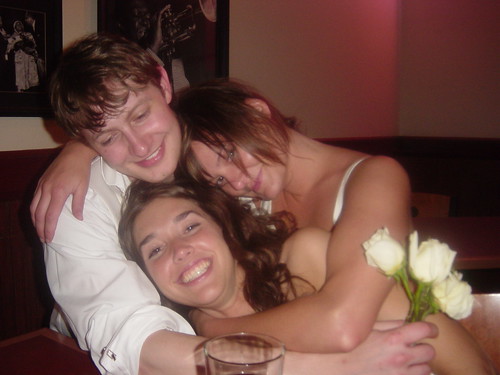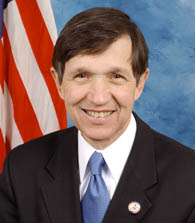
“Make Polygamous Families Compulsory” Say Nairobi Polygamists
Our Nairobians.Com team was shocked to meet Nairobi men who feel very strongly about the decriminalisation and legalisation of polygamy in the country. A polygamous family typically involves one man and two or more ‘wives.’ The Kenyan legal system recognises only monogamous marriages – it is illegal for a person to be married to more than one person at the same time. You might think that a pro-polygamy Nairobi man has a pot belly and grey hairs, but these men are in their twenties and thirties, and many feel that it is only lack of money that prevents them from being polygamous.
Blaming ‘Nature’
Salim Nganga of Shauri Moyo believes that nature bears the answer to the question of polygamy, pointing out that women outnumber men: “Kenya kuna wanawake wengi zaidi ya wanaume. Kwanini wanawake wengine wasiwe na wanaume? Watajiokoa namna gani? Wanachukua wanaume wa watu, wanawanyanganya.” Even if women outnumber men, the fact that not everyone on the planet wants to get married means that people never lack spouses out of a shortage of the opposite sex; there are many spinsters in Nairobi who love being single and don’t care for marriage.
“Wakati wa Census ya 1989 ilikuwa inasema kwamba, ili wanawake watoshane wanaume, wanastahili kuoa wanawake watatu na nusu. Watatu na nusu haiwezekani. Inastahili kila mtu awe na wabibi watano, ili tuweze kutoshana,” continues Salim, “Sasa mimi nasema ikiwa hata ni lazima, ipitishwe kama law, kwamba kila mwanamume awe na wanawake watano.” But can people’s personal lives be governed by Census statistics?
Blaming Western Culture on outlawing of Polygamy
Evans Owiti of Kamukunji argued that polygamy was only outlawed when white people arrived in Kenya: “Mzungu anakuelezea ati hiyo ni bigamy lakini yeye anakuwa na mistress, huyo mtu mwenyewe ana bibi mwingine ni vile tu anamuita na jina lingine, then Kenya tunaambiwa kuwa bibi wengine ni dhambi. Kwanza kuwa na bibi wengi ni njia ya kupunguza HIV kwa njia haraka kabisa.” But how can polygamous marriages lead to reduced HIV infections, when polygamy involves multiple people – if one person strays and contracts the virus, everyone else will get it, including the children born. Worse still, they might not use condoms because they believe they are in a marriage.
Salim Nganga of Shauri Moyo also believes that: “Hii Government na hao watu ambao wanakudanganya kwamba ni lazima uwe na bibi mmoja. Ni nani kwa historia ambaye alikuwa na bibi mmoja? Tumepoteza utamaduni, tukadanganywa na mzungu, tunafuata mzungu kwa mambo ambayo tusiyoyajua. Mimi ni Mwafrika naona haja kuoa bibi wendi. Hata bibi mmoja ni hasara na ni haramu hata kwa Mwenyezi Mungu.”
But monogamy protects the rights of women in multiple ways, and it ensures that people cannot set up families willy nilly, without having the legal obligation to provide for them. A woman in a legally recognised marriage has protection from the law in the event of abandonment or neglect, in terms of child support and alimony, but without a legally recognised marriage she would be at the mercy of the man or his family, and she could be left with no wealth or child support entitlement.
Wealth and Polygamy

The fact that polygamy is illegal does not mean that people have stopped practicing it in Nairobi, and those men who practise it usually marry one wife in church (or in a civil ceremony), then they ‘marry’ the rest by giving dowry and proclaiming theirs a traditional marriage. But that situation often requires substantial wealth on the part of the man, to give dowry, to keep more than one home, and to ‘maintain’ more than one family. Bill of Huruma argued that poverty makes such traditions unworkable: “Mtu anawezaaje kuishi room moja, sijui mguu mbili kwa mguu mbili. Eh? Hata mtu analala, mguu unaonekana huko nje. Sasa, mko na bibi na watoto, hiyo story ya mila hauwezi kugaanda mila kama uko maskini.”
The lack of multiple houses appears to inhibit would-be polygamists. Salim Nganga confesses that he has only one wife: “Mimi namke mmoja. Lakini kwa mke mmoja ananifinya kwasababu pengine hata anaweza kunifanya niwe na stress kila wakati. Saa ingine sasa kama nakuta amekasirika, inanilazimu hata mimi pia nikasirike. Sasa kutoka kazini nikimsalimia, yeye mwenyewe hajibu kwa hasira. Kama ningekuwa na bibi wengi, mimi mwenyewe hatungeweza kujibiana, ningehama hapo kwake pole pole niende hiyo nyumba nyingine. Hasira yake ikiisha, nirudi, hatungekuwa na shida.” However, polygamy cannot be the answer to marital problems because leaving one wife’s house to go to the other’s does not mean that the problem with the first wife will solve itself.
The lack of land is also something that other would-be polygamists feel inhibits them. Maina of Githurai said: “Haswa, mzungu alifanya watu kuabudu pesa. Saa hii hata mimi naweza kupenda kuwa na bibi wengi, but angalia situation ya maisha, hakuna shamba, watu ni masquatters, hawana chakula.” Maina also felt that the lack of resources is a barrier to fulfilment of conjugal duties: “Kama mwanamume hakuli vizuri, na sasa unamwambia aoe bibi wengi, arudi kwa hizo mila, na hakuli vizuri na hiyo sex ni lazima anakula vizuri ili anapata hiyo joto kwa mwili, ataweza aje kuliisha hao bibi wengi? Lakini unaona hao viongozi wetu haswa wana bibi wengi juu wanaweza liisha hao mabibi. Lakini ukiambia mtu kama mimi ambaye nimezaliwa Mathare, wazazi wangu sikukuta wakiwa na hata ploti, hiyo mambo ya bibi wengi, nitailipia aje?”
Polygamists view women as commodities
It seems that polygamous men view women as commodities to be possessed, or looking to be possessed. Evans of Kamukunji believed that in ancient Africa every woman got the ‘chance’ to get married: “Kitambo wanawake ambao hawakuolewa walikuwa wangepata nafasi ya kuolewa kama ni bibi wa pili, tatu au nne.”
It’s true that Kenya is full of single women lamenting the absence of their Mr. Right, and fretting about being single and childless by the age of thirty or forty. What does that say about their desire to be possessed, and how does it challenge streotypes about women ‘needing’ to get married in order to find an ‘owner’? We don’t necessarily hear of Kenyan men frantically searching for a woman to marry, so perhaps women in Nairobi need to ask themselves whether they are perpetuating negative stereotypes about themselves.

Salim bizzarely believes that women can handle infidelity if they know the other woman: “Hata nifaida ukiwa na bibi wengi wanajuana na kila mmoja anajua huyo ni bibi mwenza, hakutakuwa na matatizo.” Women in polygamous situations are arguably in helpless positions – some may have been forced into the marriage by their families upon dowry exchange, they may have been lied to, or financial circumstances may make the woman feel that it’s preferable to poverty. In any case, an existing wife may not have the financial means to leave the situation with her children when a man says that he’s going to get a co-wife, so just because she stays does not mean that she accepts the polygamy.
It was very ironic that one polygamy fundamentalist cannot bear the thought of his woman straying, and he views polygamy as a way of keeping tabs on a woman: “Lakini ukiwa na bibi wa siri, inaweza kuwa hasara,” declared Salim Nganga of Shauri Moyo, “Hata huyo yule walala na yeye kule na anajificha inaweza kuwa hata yeye tunashare na jamaa kama Chalo, ama jamaa mwingine kama Mutiso ama Kolil. Lakini kama angekuwa wako nyumbani, huyu bibi hangeweza kuenda na Chalo, kwa sababu anajulikana ni wangu direct, hakungekuwa na matatizo.”
Maybe Kenyans need to rethink the system of dowry, since it perpetuates the falsehood that women are commodities to be purchased. If a groom’s family wants to give the bride’s family gifts as a symbol of their new union, that’s fine, but the bride’s family must also give the groom’s family gifts. Think about the last dowry negotiation that you attended or heard of, and think about the cold, hard bargaining or extortion that takes place, initiated by the bride’s family, as if they are selling something. By the time the groom and his family have finished taking out loans and selling things to pay for the dowry, they will be seething with resentment or feeling that they now own something new.
So can women marry multiple husbands?
What irony that polygamous men expect their women to be monogamous! Why don’t they call for women to have multiple husbands? In some African tribes that was and still is done. The problem with the polygamy argument is that it is all about the selfish wishes and desires of a roaming man, but if the tables were turned that man cannot handle a taste of his own medicine
source: http://www.nairobians.com/family.html
 There is no cure for terrorism, just like there’s no cure for cancer.
There is no cure for terrorism, just like there’s no cure for cancer. They must see us as the cancer that is trying to destroy them.
They must see us as the cancer that is trying to destroy them.



![[It's] not that the teens are stupid or incapable of [things]. It's sort of unfair to expect them to have adult levels of organizational skills or decision making before their brain is finished being built.](http://www.pbs.org/wgbh/pages/frontline/shows/teenbrain/art/gieddpq.gif)

